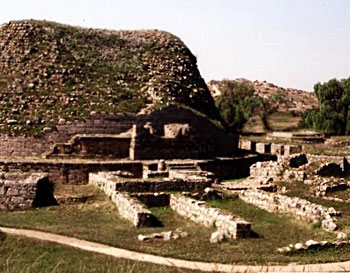 Development through creation of specialized Branches: Excavations, Prehistory, Building Survey, Temple Survey, Epigraphy, Museums, Conservation, Science, Horticulture and Publication have added to the significance of Archaeological Survey of India. Institute of Archaeology offers a full-time Postgraduate diploma in Archaeology of twenty four months duration and several other specialized courses. The ASI is a multi-cadre organization who has archaeologists, civil engineers, chemists, epigraphists, horticulturists and administrators.
Development through creation of specialized Branches: Excavations, Prehistory, Building Survey, Temple Survey, Epigraphy, Museums, Conservation, Science, Horticulture and Publication have added to the significance of Archaeological Survey of India. Institute of Archaeology offers a full-time Postgraduate diploma in Archaeology of twenty four months duration and several other specialized courses. The ASI is a multi-cadre organization who has archaeologists, civil engineers, chemists, epigraphists, horticulturists and administrators.
Functions of the Archaeological Survey of India
The principal functions include conservation, developing and maintaining archaeological gardens, chemical preservation of monuments and antiquities; archaeological examination and excavations. Recording and editing of inscriptions; establishment and maintenance of Site Museums; promotion of specialized studies; architectural survey, publication of guidebooks on monuments, archaeological sites and remains, excavation reports, monographs on architectural studies are the other responsibilities of ASI.
Implementation of the Antiquities and Art Treasures Act (1972) is also a function of ASI. This is done in order to regulate export trade in artefacts and art treasures as well as to prevent smuggling and fake dealings in antiquities. Preserving antiquities in the form of sculptures is also one of its major functions. The protected list includes: forts, fortresses, palaces; temples, churches, mosques, monasteries, agiaris, synagogues, funerary monuments, palaces commemorating or connected with some important historical event; residential buildings, man-made reservoirs, tanks, step-wells and prehistoric sites.
This variety of protection lists does not allow any identical method of conservation that can be applied. The original personality of a monument has to be preserved by ASI. No new constructions that would materially alter the relations of mass and colour should be permitted. The moving of a monument cannot be allowed. Other functions include
ASI has also undertaken major conservation works abroad besides carrying out excavations, explorations, images and other studies in countries like Afghanistan, Nepal, Cambodia and Egypt. A museum was set up in Angola with the help of ASI. Other functions of ASI include architectural survey of monuments; conducting epigraphical and numismatic studies; imparting training in Archaeology and conducting horticulture operations in and around ancient monuments and sites.
Underwater Archaeology Wing
Underwater Archaeology cannot be avoided in a country like India that has a long coastline, many islands. The water areas of India are rich in underwater cultural heritage.
Underwater archaeology was started in the year 1981. Off shore explorations have been quite popular. However Underwater Archaeology Wing was established in the year 2001 that marked a major step towards the development in this regard.
Extensive archeological studies have been conducted in the Arabian Sea and Bay of Bengal. This department is dedicated to recording of underwater sites and old shipwrecks and protecting underwater cultural heritage. This wing collaborates with other government organizations for the study and protection of underwater cultural heritage.
Regulation of underwater activities is also one of the main concerns of this department.



















